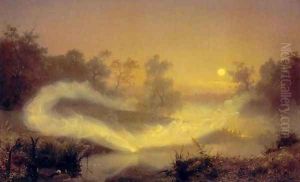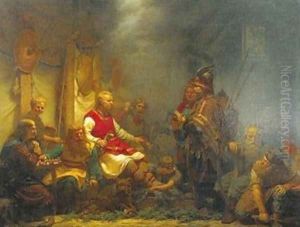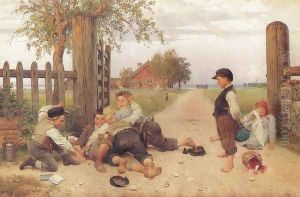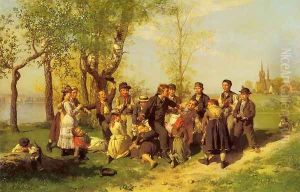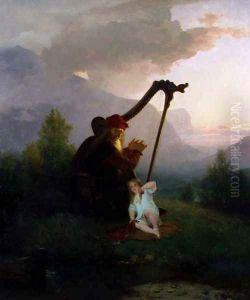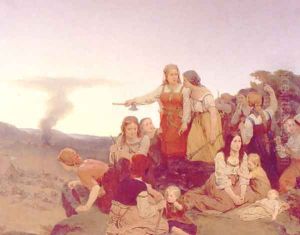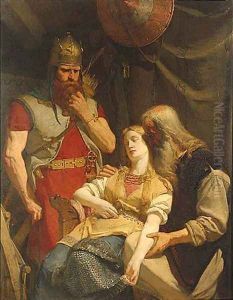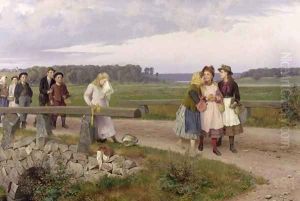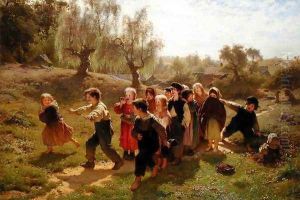Johan August Malmstrom Paintings
Johan August Malmström was a Swedish painter and illustrator, born on October 14, 1829, in Gagnef, Dalarna, Sweden. He is known for his contributions to Swedish art during the 19th century, particularly in genre painting and historical scenes. Malmström began his education at the Royal Swedish Academy of Fine Arts in Stockholm at the age of 12, where he studied for many years. He exhibited a keen interest and talent in drawing and painting from an early age, leading him to pursue an artistic career.
During the 1850s, Malmström traveled to Paris, which was then the center of the art world, to further his studies. His time in Paris exposed him to new art movements and techniques, which influenced his style and approach to painting. Upon his return to Sweden, he became an important figure in the Swedish art scene, and his works started to gain recognition for their delicate treatment of light and attention to detail.
Malmström is perhaps best known for his illustration of the poem 'Grave' by Esaias Tegnér and his depiction of fairies and myths in Swedish folklore. His painting 'Älvalek' (Dance of the Fairies) is one of his most famous works and exemplifies his fascination with the ethereal and mystical aspects of nature and folk tales.
In addition to his work as a painter, Malmström was also a professor at the Royal Swedish Academy of Fine Arts and influenced a generation of Swedish artists. He played a significant role in shaping the curriculum and the direction of the academy. His teachings and mentorship left a lasting impact on Swedish art education.
Malmström's influence extended beyond painting and teaching; he was also involved in public art projects, including the design of historical frescoes for the Royal Palace in Stockholm. These works contributed to a nationalistic spirit in Swedish visual arts during his time.
His artistic legacy is characterized by a blend of romanticism and realism, capturing both the beauty of Swedish landscapes and the essence of its cultural heritage. Johan August Malmström passed away on October 18, 1901, in Stockholm, but his contributions to Swedish art continue to be celebrated and studied. His works can be found in various museums and collections across Sweden, serving as a testament to his skill and creativity as a 19th-century artist.
